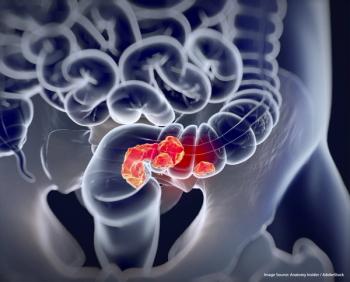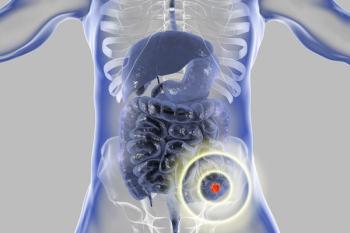
Therapy-Associated Polyposis May Mimic Hereditary CRC Symptoms in AYA Cancer Survivors
Therapy-associated polyposis was found to have similar features to various hereditary colorectal cancer symptoms, and recognition of it could have implications for cancer risk and screening among childhood and young adult cancer survivors.
A study, published in the journal Cancer Prevention Research, found that childhood and young adult cancer survivors who develop therapy-associated polyposis have features that may mimic various hereditary colorectal cancer symptoms, suggesting multiple concurrent biologic mechanisms.1
Researchers indicated that recognition of this diagnosis could have implications for cancer risk and screening, and further work is necessary to better understand the underlying mechanisms for polyposis development.
“Survivors of cancer in childhood or young adulthood have an increased risk for a variety of cancers and noncancerous conditions, including colorectal cancers and polyps, in the years after treatment,” first author of the study Leah Biller, MD, physician-researcher at Dana-Farber Cancer Institute and Brigham and Women’s Hospital, said in a press release.2 “When they develop polyposis, we often are concerned about a hereditary cause and recommend testing to see if they have an inherited link to the condition. Patients with therapy-associated polyposis, however, develop polyposis without a known hereditary susceptibility. This suggested that while their condition mimicked the symptoms of hereditary polyposis syndromes, it was a separate phenomenon.”
To identify the characteristics of therapy-associated polyposis, researchers gathered data from 34 patients with therapy-associated polyposis who did not have a hereditary or known genetic link to the condition but had been previously treated with chemotherapy and/or radiation therapy for childhood and young adult cancers. Of the cohort, originally 27 had Hodgkin lymphoma, 3 had neuroblastoma, 1 had acute myeloid leukemia, 1 had medulloblastoma, 1 had nephroblastoma, and 1 had non-Hodgkin lymphoma. Gastrointestinal polyposis was first detected at a median of 27 years after the patients’ cancer treatment.
Thirty-five percent of the patients were found to have more than 50 colorectal polyps, and 94% had more than 1 histologic polyp type, including adenomas, serrated polyps, hyperplastic polyps, and hamartomas. These findings contrast other hereditary polyposis syndromes in which all of the polyps are generally of the same type.
Additionally, 74% of the patients had clinical features suggestive of more than 1 colorectal cancer predisposition syndrome (e.g. attenuated familial adenomatous polyposis, serrated polyposis syndrome, extracolonic manifestations of familial adenomatous polyposis, mismatch repair deficient colorectal cancer, or hamartomatous polyposis), including 24% who presented with features of multiple such syndromes. Half of the cohort were diagnosed with cancerous conditions outside of the colon, and 47% were diagnosed with non-cancerous conditions indicative of prior cancer treatment. These findings suggested that those who develop therapy-associated polyposis might be particularly susceptible to treatment-related conditions in general, according to the authors.
“(Therapy-associated polyposis) appears to be an acquired condition that imitates various familial colorectal cancer syndromes, but is biologically distinct from them,” Matthew Yurgelun, MD, oncologist at Dana-Farber and director of the Lynch Syndrome Center at Dana-Farber, said in a press release. “The fact that it takes different forms and involves different types of polyps suggests that there may be multiple biological pathways involved in its development. We’re working to better understand these pathways in order to improve treatment of it and other treatment-related conditions.”
Notably, the majority of cases observed in this study did not have genetic testing for all genes with known possible associations to polyposis, nor did the researchers have full germline panels for all patients. It is therefore possible that individuals with an inherited polyposis or cancer predisposition syndrome may have inadvertently been included in the data.
References:
1. Biller LH, Ukaegbu C, Dhingra TG, et al. A Multi-Institutional Cohort of Therapy-Associated Polyposis in Childhood and Young Adulthood Cancer Survivors. Cancer Prevention Research. doi:10.1158/1940-6207.CAPR-19-0416.
2. Researchers describe new condition involving numerous GI polyps in cancer survivors [news release]. Boston, Massachusetts. Published February 12, 2020. eurekalert.org/pub_releases/2020-02/dci-rdn021020.php. Accessed February 18, 2020.
Newsletter
Stay up to date on recent advances in the multidisciplinary approach to cancer.

















































































